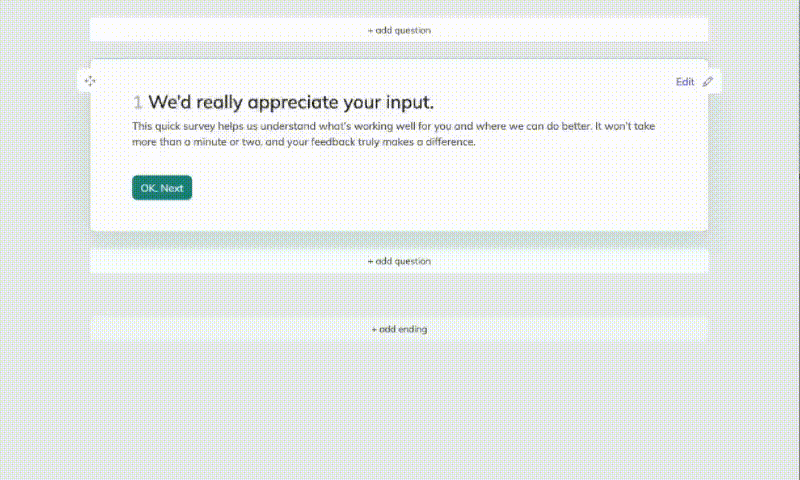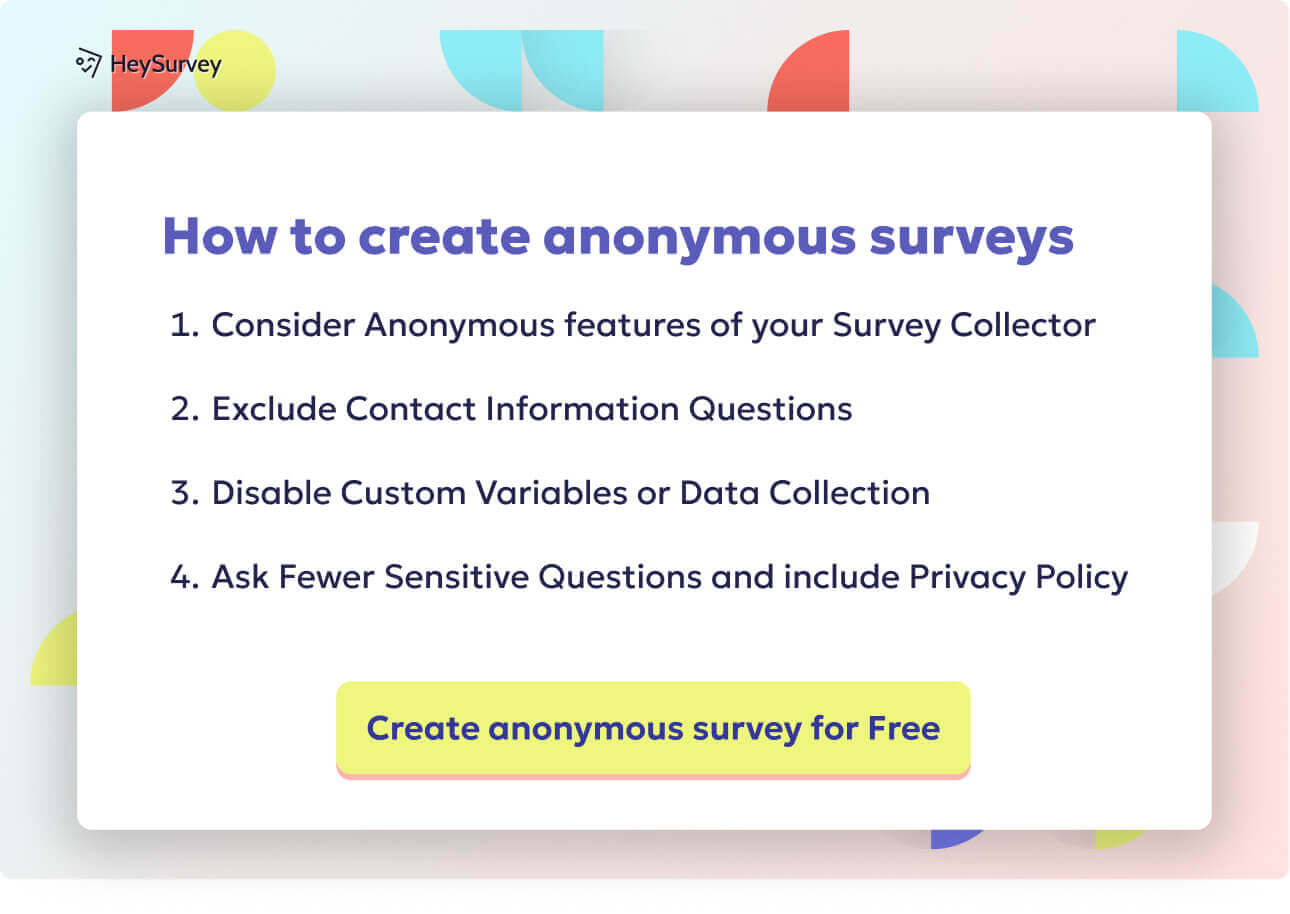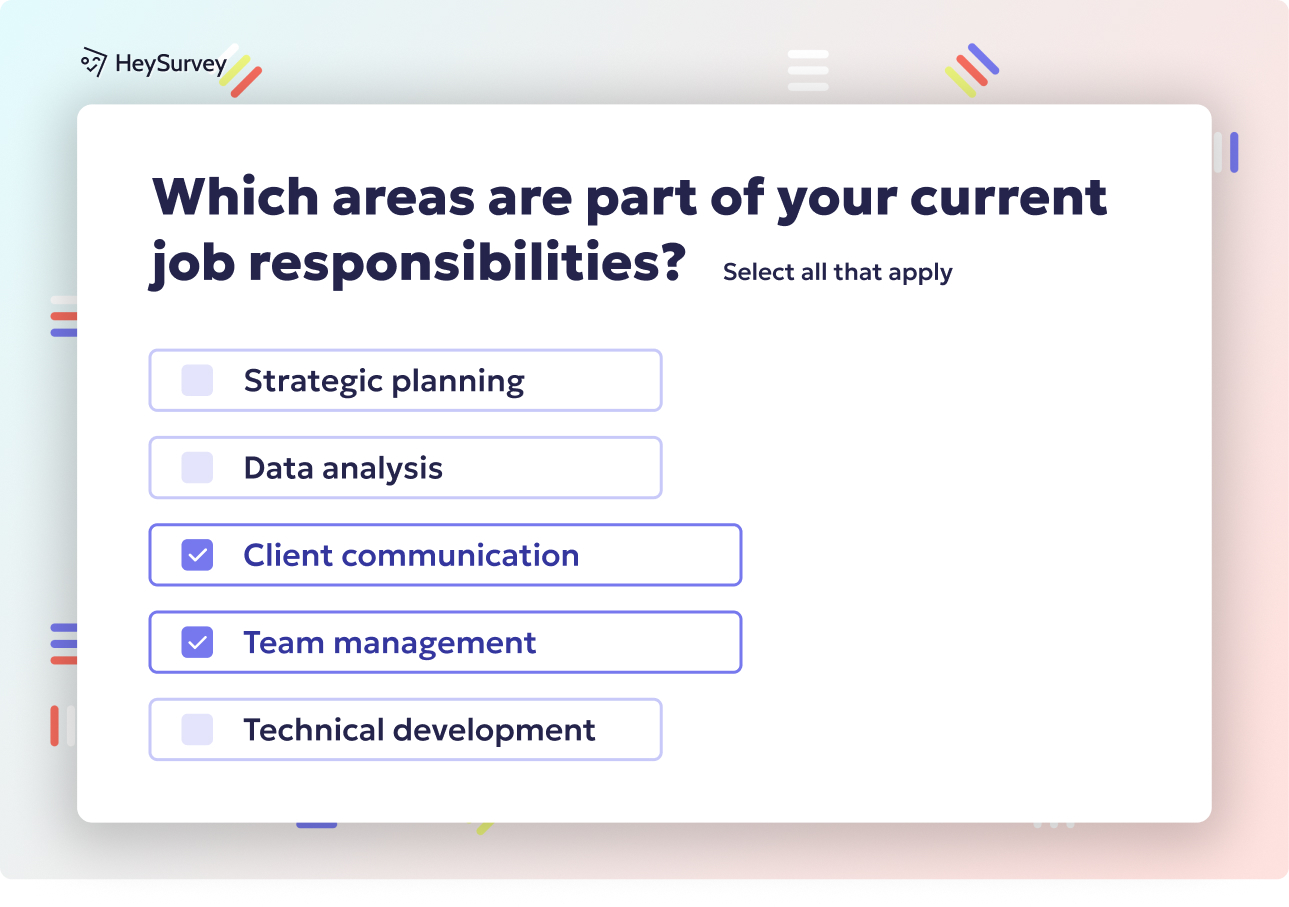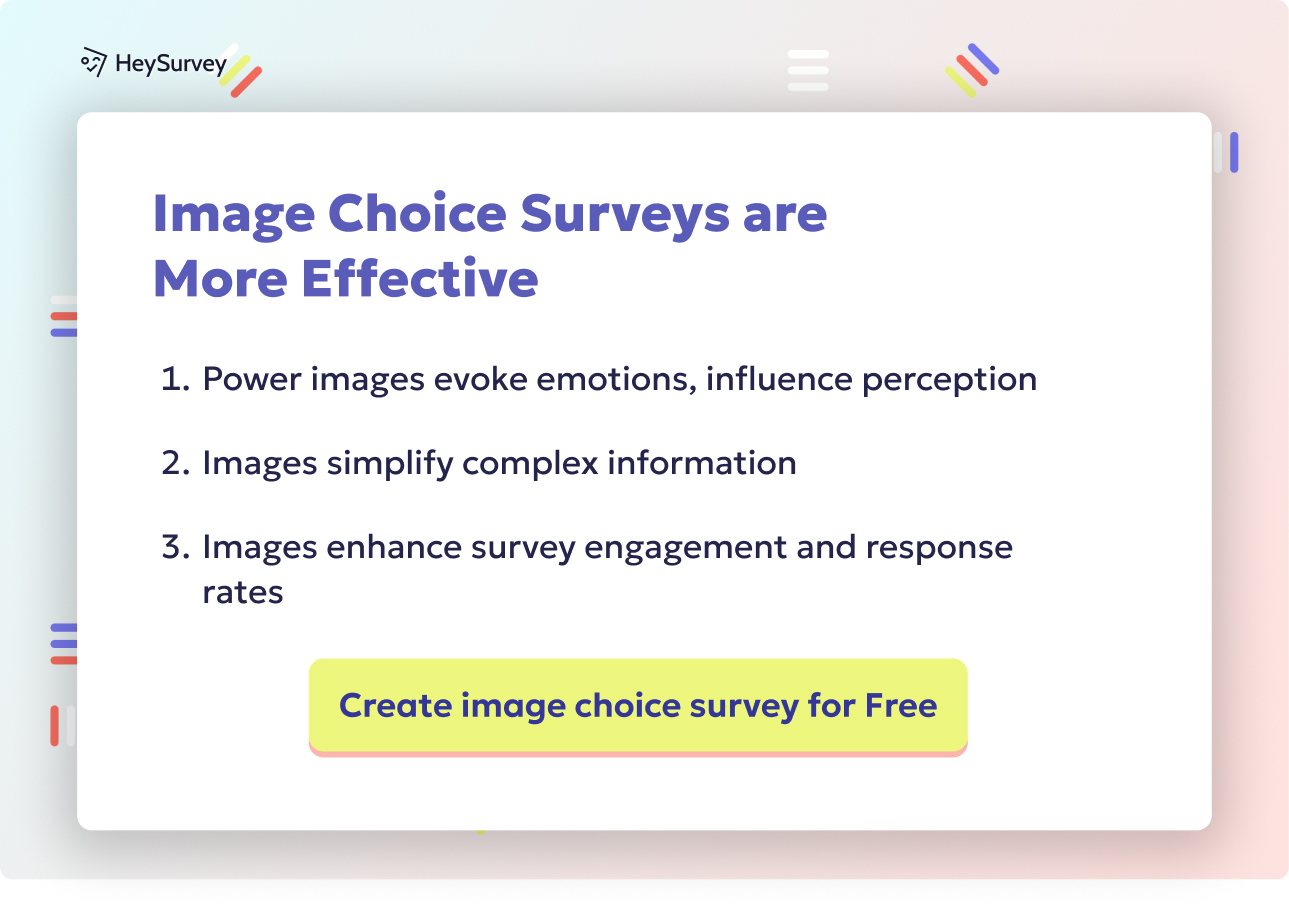28 Gun Control Survey Questions to Spark Meaningful Debate
Discover 25 insightful gun control survey questions to spark debate and gather opinions—perfect for research, polls, or classroom discussions.
Talk about a hot topic! Gun-control-focused surveys are your passport into America’s most debated issue. If you’re looking for questions about gun control or clever gun violence questions to decode public attitudes for policy, elections, or post-incident public checks, you’re in the right place. You’ll see gun control debate questions matched to the moments that matter most for researchers, non-profits, and civic changemakers. Ahead, I’ll walk you through survey types, when to use each, and give actionable, ready-made question sets that squeeze real insights from every response.
Public Opinion & Attitudes Surveys
Why & When to Use This Survey Type
When there’s a storm of chatter about new legislation or a tragic event puts gun control questions in the headlines, these surveys shine. They jump right into the heart of public sentiment, measuring just how warm or chilly folks feel about proposed rules.
If you want to put a number on the population’s stance, this tool is for you. Think policy windows, election cycles, and grant-funded projects needing clear data.
You gather:
- Levels of support or concern for new laws
- Direct feedback about specific regulation types
- A snapshot of what’s fueling personal choices – be it public health or constitutional rights
Questions on gun control in these surveys let you fine-tune your messaging for policymakers and the media. Handy, right?
If you love a good statistic, this is your playground. Gallup, Pew Research, or even local news polls offer a treasure trove to compare and boost your findings with hardcore evidence.
Five Sample Public Opinion & Attitudes Questions
On a scale of 1–5, how strongly do you support universal background checks for all firearm purchases?
How effective do you believe stricter gun laws are in reducing gun violence?
Which factor most influences your opinion on gun control? (Personal safety, constitutional rights, public health data, etc.)
Do you think concealed carry permits should be easier, tougher, or unchanged to obtain?
Which gun control measure would you prioritize if only one could pass?
You can bet these gun control research questions will spark passionate, revealing responses. Use them to fuel conversations or build headline-grabbing reports.
A 2025 nationally representative survey found 74 % of Americans support laws requiring firearms to be kept locked when not in use, reflecting broad support across political and ownership lines (source)

Certainly! Here’s a clear, concise instruction section for creating a survey with HeySurvey, tailored for first-time users, with three easy steps and bonus tips. Place the "Use this template" button below these instructions.
How to Create Your Survey with HeySurvey in 3 Easy Steps
Ready to build your own survey? Just follow these simple steps!
Step 1. Create a New Survey
- Click the “Use this template” button below to start.
- HeySurvey will open a ready-made template for you.
- You can rename the survey or use the default name for now.
Step 2. Add & Customize Questions
- Click Add Question at the top or between existing questions.
- Pick the question type you need (e.g., multiple choice, text, scale).
- Enter your question, add descriptions, and set whether an answer is required.
- You can upload images or choose from Giphy/Unsplash to enrich questions.
- Rearrange or duplicate questions as needed.
Step 3. Publish Your Survey
- When you’re ready, click Publish.
- (You’ll be prompted to sign up or sign in if you haven’t already.)
- After publishing, you’ll get a link you can share with anyone.
Bonus Steps for a Custom Survey
- Apply Branding: Add your logo or colors using the Designer Sidebar for a professional touch.
- Adjust Settings: Set a start/end date, response limits, redirects, and more in the Settings Panel.
- Skip Logic & Branches: Use Branching to make questions appear based on previous responses.
- Preview: Click Preview anytime to see exactly how your survey will look on any device.
That’s it! Click the button below to get started.
[Use this template]
Need more details? Scroll below for a thorough walkthrough of all HeySurvey’s features and settings.
Policy Knowledge & Awareness Surveys
Why & When
Sometimes, the real barrier isn’t opinions but what people actually know about policy. Surveys that test gun control research questions help organizations spot gaps in what people understand and correct the record.
Perfect timing? Right before legislative hearings, public comment periods, or big advocacy pushes. Here’s the thing: when people are in the dark, misinformation grows. Enlighten them with facts and you might just shift minds.
Use these surveys to:
- Identify knowledge holes about federal, state, and local gun regulations
- Direct education efforts more smartly
- Get a sense of how people are building their beliefs on questions about gun control
Pair your surveys with official government or non-profit educational resources for the win.
Sample Policy Knowledge & Awareness Questions
Are you aware that federal law requires licensed dealers to perform background checks?
True or false: ‘Red flag’ laws allow family members to petition to remove firearms from at-risk individuals.
Which level of government (federal, state, local) do you believe sets most gun laws?
How familiar are you with your state’s safe-storage requirements?
Where do you primarily get information about gun legislation? (News, social media, advocacy groups, etc.)
These gun control research questions don’t just tick boxes; they reveal who’s policy-savvy.
Many U.S. adults erroneously believe universal background checks are already federally required—41% held this misconception—highlighting a key knowledge gap in gun policy awareness (source)
Behavioral Intention Surveys
Why & When
If you’re a policy designer, you’re after a crystal ball. These surveys help forecast what people will do if new laws appear. Will they comply with magazine limits or lobby their lawmakers?
Timing is everything: run these as new proposals loom or before rolling out a big program. They’ll tell you how your target audience will react, or occasionally, panic and buy extra locks.
Plus, these are the spot to pose those juicy gun violence research questions—like whether people will join buyback drives or sign up for safety courses.
Organizations use them to:
- Predict compliance rates
- Gauge uptake for incentives and mandates
- Eliminate “wait and see” guessing games
Sample Behavioral Intention Questions
If high-capacity magazines were banned, how likely are you to comply within 30 days?
Would you participate in a voluntary gun buyback program if offered in your city?
If safe-storage mandates included tax credits, how likely would you adopt them?
How likely are you to contact your elected official about gun violence issues this year?
Would you take a gun-safety course if it became a permit requirement?
Deploy these questions to ask about gun violence and improve predictions for program success.
Gun Ownership & Usage Experience Surveys
Why & When
Understanding gun ownership is like peeking behind the curtain. Segmenting data by shooters and non-shooters helps everyone tailor messages for less drama and more impact.
This survey type is essential for:
- Retailers who want to refine services
- Public-health teams mapping risk factors
- Insurers and grant writers crunching numbers for gun violence questions
It’s especially useful to spot trends—like who’s getting trained, who’s locking their guns, or who views their AR-15 as a family heirloom.
If you want to spark dialogue on safe-storage practices (or just count the ammo cans in the closet), here’s where to start.
Sample Gun Ownership & Usage Questions
Do you currently own a firearm? (Yes/No)
For what primary purpose do you own a gun? (Self-defense, hunting, sport shooting, collection, other)
How often do you practice at a shooting range?
Have you completed any firearm-safety training in the past 12 months?
Where do you store your firearms when not in use?
Tie these to gun violence questions and you’ll quickly spot patterns that matter for accident or theft prevention.
Emotional cues like reminders of past school shootings significantly increase Republican youth's support for arming school staff, while informational cues (e.g. highlighting low violence in states with loose laws) more effectively sway attitudes across party lines (mdpi.com)
Gun Violence Exposure & Safety Perception Surveys
Why & When
Here’s the thing: personal experience with violence changes everything. These surveys measure how living through, witnessing, or even hearing about incidents influences policy attitudes.
Use them when:
- Evaluating the need for trauma-informed interventions
- Planning urban or school safety projects
- Writing grant proposals for community outreach grants
Plus, these surveys help pinpoint which neighborhoods or venues feel—well, less inviting—thanks to gun fears.
Track:
- The ripple effects of exposure (direct and indirect)
- Shifts in behavior or routine
- New household safety protocols adopted after a scare
Sample Gun Violence Exposure & Safety Perception Questions
Have you or anyone you know been injured by gun violence in the past five years?
How safe do you feel in your neighborhood after dark?
In the past year, how often have you heard gunshots near your residence?
What safety measures has your household adopted due to concerns about gun violence?
Which public places (schools, malls, places of worship) do you avoid because of shooting fears?
These questions about gun violence help connect lived reality with opinions on policies more accurately.
Demographic & Psychographic Profiling Surveys
Why & When
No two gun owners—or non-owners—are exactly alike. Splicing your data by demographics and attitudes lets you play 3D chess with advocacy or campaign messages.
Run these in:
- Large academic studies with multivariate analysis
- Political campaign micro-targeting operations
- Deep-dive reports on gun control debate questions
You’ll gain insight into:
- How ideology, media use, and daily life mix with gun stances
- The impact of social trust and political leaning
- Regional or generational divides in questions on gun control
Plus, you’ll be ready to adjust campaigns based on what influences each segment most.
Sample Demographic & Psychographic Profiling Questions
Which political affiliation best describes you?
How would you rate your overall trust in government institutions?
Which news sources do you consult daily?
Describe your primary reason for supporting or opposing gun control in one sentence.
How frequently do you engage in political discussions on social media?
With these gun control debate questions, you’ll crack the code on why people land on one side or the other.
Mixed-Methods Longitudinal Tracking Surveys
Why & When
Single snapshots are good—but tracking over time is even better. Mixed-methods surveys combine numbers with meaningful stories.
Ideal for:
- Think tanks mapping long-term trends
- Public-health departments testing impact of interventions
- Anyone craving visuals on shifting opinions
These surveys marry scaled responses with open-ended prompts, letting you follow people’s “why” as well as their “what”. Picture plotting the arc of public emotion through news cycles, elections, or after new tragedies.
Track:
- Support levels over the years
- Pivotal events and news stories that reshape beliefs
- Unique local or demographic trends
Sample Mixed-Methods Longitudinal Tracking Questions
Rate your current support for stricter gun laws (1–10).
In your own words, what is the most important factor in the gun control debate today?
How has your opinion changed in the past 12 months? (Gotten stronger, weaker, unchanged)
What events most influenced any change you noted above?
Would you be willing to participate in follow-up surveys?
With these gun control research questions, your reports will overflow with insight, ready for rich, visual storytelling.
Dos and Don’ts: Best Practices for Crafting Gun Control Survey Questions
Here’s your field guide to writing survey questions with integrity and flair:
- Do keep wording neutral; sway respondents and you turn insights into fiction
- Do randomize answer choices; never let agreement hog the top slot
- Do pilot test with diverse groups; what’s clear in Boston might baffle Boise
- Do separate “gun control questions” and “gun violence questions”—one is policy, one is incident-specific
- Do ensure anonymity on sensitive items; privacy lets honesty bloom
- Don’t overlook ethical approvals (IRB) for research studies; even superheroes need permits
Always analyze your data with full transparency. Disclose every funding source—because credibility is your campaign’s secret sauce and your SEO trust signal. Plus, transparency is good manners in the research world.
So, whether you’re after granular data or broad public vibes, drafting great questions about gun control is where meaningful change starts. Check back, iterate, and remember: HeySurvey is free, forever—seriously, no hidden fees, no funny business.
Related Poll Survey Surveys

31 Poll Survey Questions Examples for High-Response Polls Guide
Discover 35 poll survey questions examples and expert tips to craft engaging polls that boost res...

31 Political Survey Questions: Types, Uses & Best Practices Guide
Explore 27 expert political survey questions with types, use-cases, and best practices to master ...

30 Thanksgiving Survey Questions Poll: Ultimate Holiday Guide
Discover 30+ Thanksgiving survey questions poll ideas with ready-to-use samples for family, work,...

